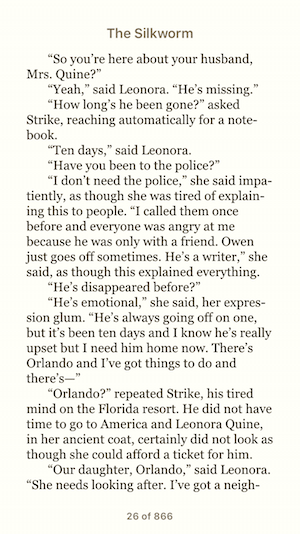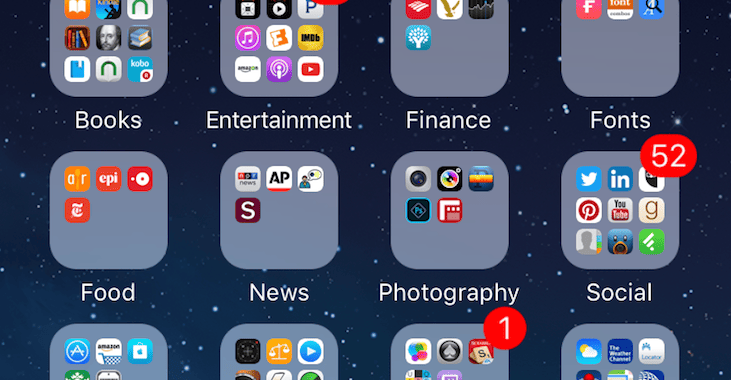Like lots of folks, I was excited when the smartphone first appeared as a real device that ordinary people could use.
So excited that I bought a very early smartphone, a Motorola BlackJack, only to return it within a week. It was simply useless.
That’s why, when the iPhone came out a year later, I waited to jump in. Once I did, like everybody else reading this, I quickly got hooked.
Who wouldn’t?
Not only was it just like the “personal communicators” and other futuristic portable gadgets that appeared routinely in science fiction movies, it was better.
Soon, the handy and capable little computer sitting in my pocket started to eat things. Mostly other devices, no matter what format they had existed in before. As I progressed through iPhone models, the phones continued to eat. They ate:
- My watch: who needs a watch when you’ve got the time, alarms, stopwatches, and the time for every time zone on earth already?
- My appointment book: I was never very good with an appointment book, but the Calendar app keeps me alerted to what I need to do, with whom, and when I should start getting ready, and it does it all effortlessly.
- My digital camera: I think I still have one around here somewhere, I haven’t seen it recently. It’s now suffering from “Just another device I would need to carry” syndrome.
- My PDA: Yes, I admit it, I’m a sucker for tech gadgets and proud to say I spent quite a bit of time learning Graffiti, the gesture-to-text language from Palm days.
- My MP3 player: According to a study from Pew Research, forty percent of adults in the U.S. apparently still own an iPod or similar MP3 player (we’ve got one). I’m guessing that’s the exact population that hasn’t bought a smartphone yet.
- My GPS unit: remember when you had to buy these add-ons? At the dealer the upgrade would have cost me @2,500, or I could have bought one at Best Buy for $500. Now it’s a free app on my phone.
- My land line: my son looks at me funny when I ask him if he’s going to have a phone “installed” at his new place. More and more people are abandoning wired phones altogether, dropping a utility bill in the process.
- My recipe cards: Although I’m an avid cook and baker, I’m not that good at organizing my recipes and keeping track of those I haven’t used in a while. Now I’v got Evernote, the all-purpose storage and retrieval tool, hooked up to the New York Times Cooking app, and an account on Epicurious, where keeping and finding recipes is a snap.
- My dictionary: everybody has a dictionary app, right? Mine even tells you how to pronounce the words.
- My calculator: I used to keep one of these on my desk. Really. Haven’t seen it recently, it must be in a drawer somewhere.
- My newspaper: As longtime fans of newsprint, Jill and I still get a newspaper thrown onto our driveway every morning. But is that where I actually get my up-to-the-minute news? Of course not. News apps and customized alerts are everywhere.
It just goes on and on. Meditation tapes? Replaced by Youtube playlists. Digital carpenter’s level? There’s an app for that. Document scanner? Don’t need one any more, I’ve got the TurboScan app. Compass? Are you kidding? You’ve never seen one as nice as the one on my iPhone. Credit cards? They are being absorbed right now into smartphone pay systems.
And every time the phone gets more competent, it gets more essential to us at the same time. Every function we add binds us closer to our smartphones. We really can’t leave home without them.
So, really, it was no wonder the smartphone would get around to eating the e-readers, too.
Pew Study Show Trends in Device Ownership
The Pew Study that came out a couple of days ago, The Demographics of Device Ownership by Monica Anderson, had some pretty revealing statistics.
The study showed that just about everyone in the U.S. under 50 years of age now has a smartphone, (83–86%) and 68% of adults overall.
That’s actually great news for indie authors and publishers. More people are reading, and as you can see on any street corner or coffee shop almost anywhere you go, lots of people are reading on their phones.
For most people, a dedicated e-reader is in “just-another-device” category. Maybe you want to take lots of books when traveling, I could see that. But I’ve got 5 or 6 e-reader apps on my phone already.
 And look, there’s not that big a difference any more in screen size, either. The iPhone 6s+ has a 5.5″ screen, compared to the small Kindle Fire at 6″—there really isn’t all that much difference. I particularly like the page display in iBooks.
And look, there’s not that big a difference any more in screen size, either. The iPhone 6s+ has a 5.5″ screen, compared to the small Kindle Fire at 6″—there really isn’t all that much difference. I particularly like the page display in iBooks.
The Pew also reports that e-reader ownership has decreased, although nearly half (45%) of all adults own a tablet of some kind. Here’s their report:
“Some 19% of adults report owning an e-reader – a handheld device such as a Kindle or Nook primarily used for reading e-books. This is a sizable drop from early 2014, when 32% of adults owned this type of device.”—Pew Research Center
It makes you wonder what happened to all those e-readers. Did people throw them out? Dropping from 32% to 19% would be a lot of devices. The adult population of the U.S. is somewhere above 250,000,000 so a 13% drop in e-reader ownership would mean that more than 32 million devices just… disappeared?
I think it’s more likely people just forgot they owned them. Like my digital camera, which I haven’t seen in a couple of years, and which I didn’t remember I still owned until I sat down to write this story.
As an author and publisher, I think the more people there are reading, the better. Print book sales are very stable, since there hasn’t been a wholesale rush to ebooks that many people predicted.
But complementing the print books we know and love, there’s a gigantic and growing market for content that’s appropriate for reading on the bus, while waiting in line somewhere, or during a workday lunch.
Reading, watching videos, using the tools embedded in our swiss-army-knife digital companions—I think it’s a great picture. We’ll never be separated from the literature or entertainment that’s fascinating us at the moment.
For entrepreneurial authors who understand how powerful direct connection to their readers can be, this is simply one more wave in the sea change washing over the publishing industry.
There are new ways to make use of this new world where people have a smartphone in their purse or pocket, ways to directly monetize our work that leverages the effort we’ve put into growing our author platforms, too. More about that very soon.
In the meantime, it’s going to be quite a ride.



